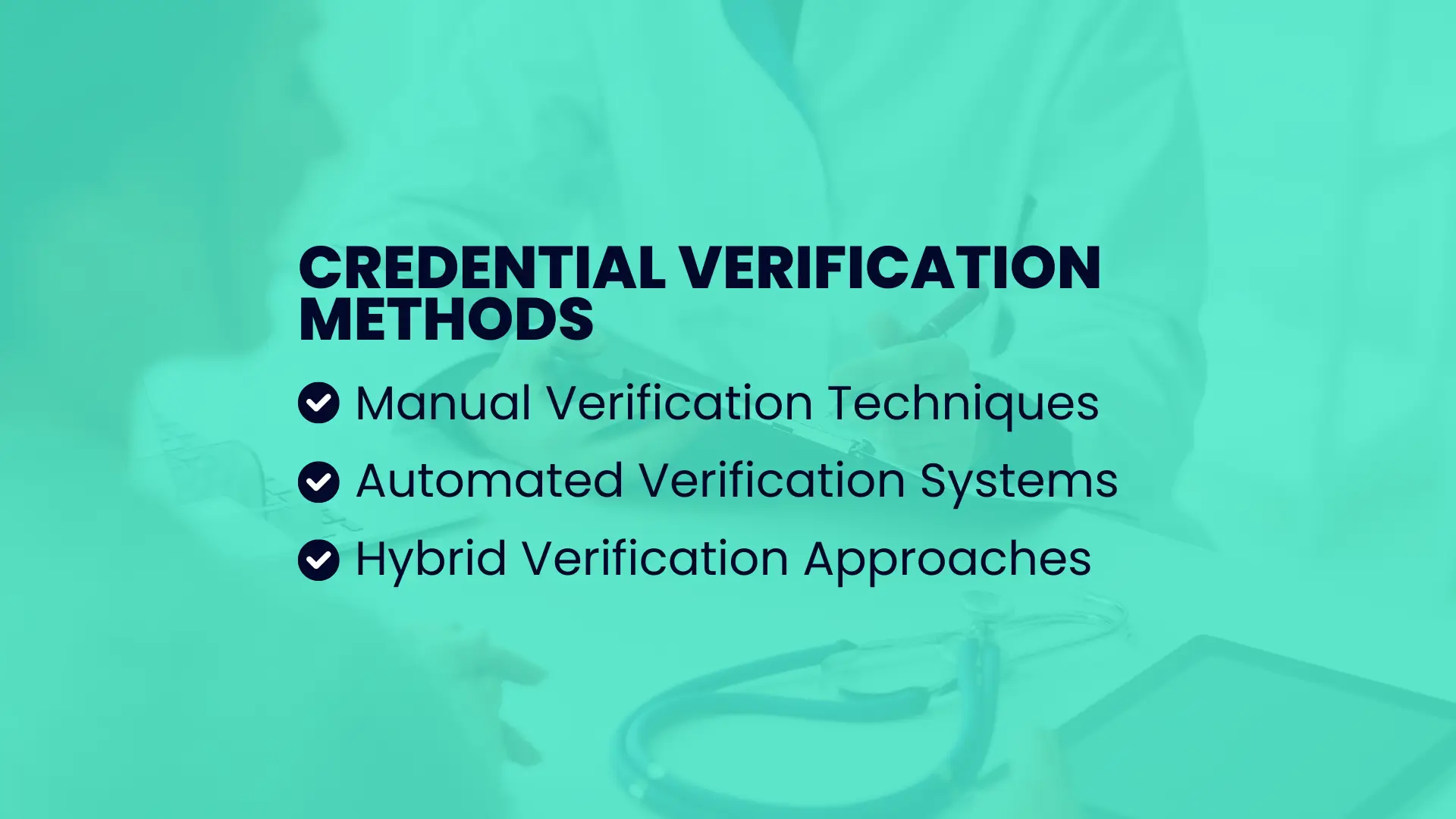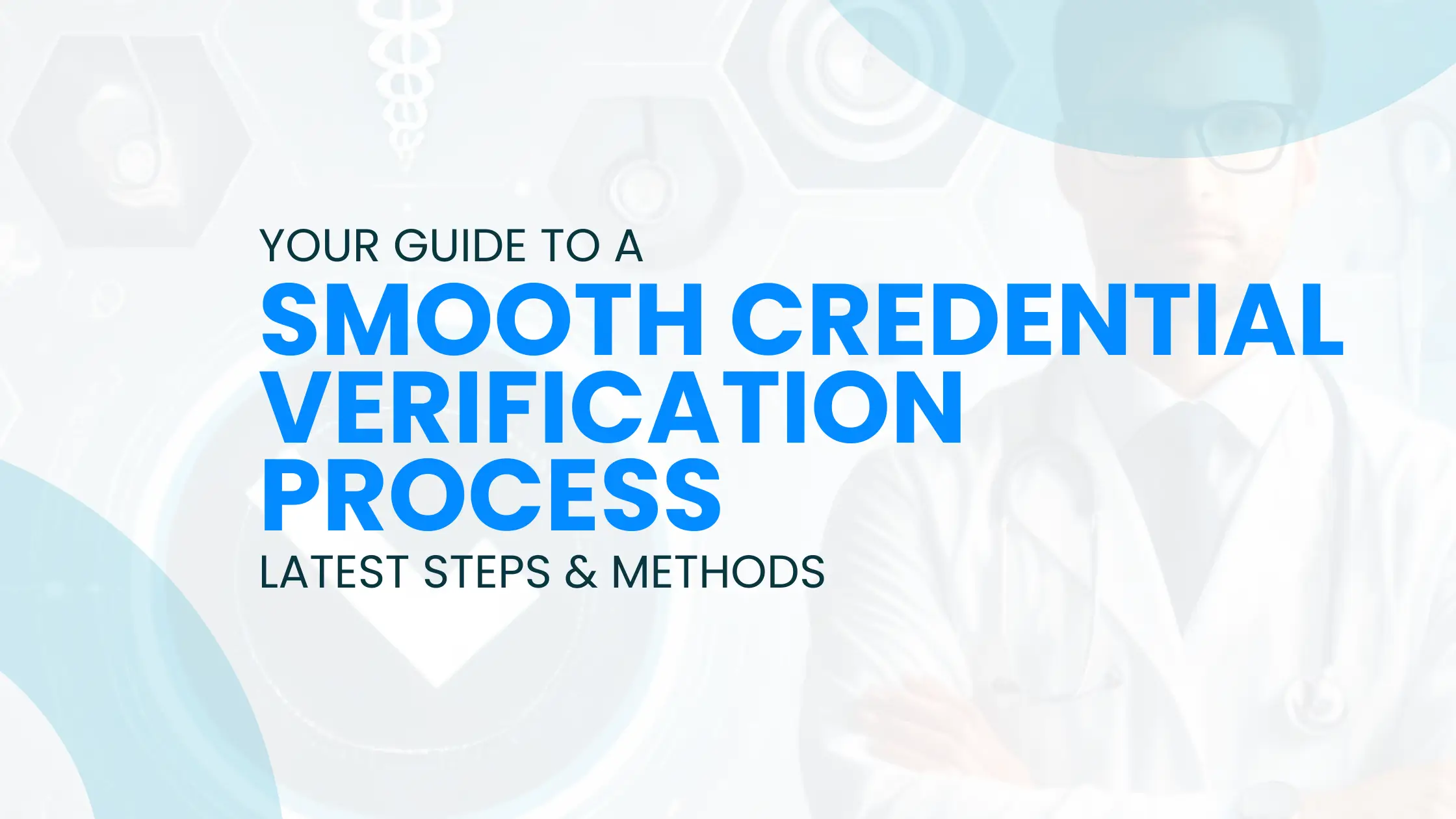Credential Verification Process is a fundamental process in maintaining the integrity of various systems ranging from education and employment to accessing specialized services. It involves a meticulous analysis and confirmation of an individual’s qualifications, experience, and professional certifications against claimed records or statements. This process safeguards institutions from fraudulent claims and ensures that individuals possess the requisite skills and knowledge they purport to have.
A systematic approach to the verification process is critical for accuracy and efficiency. Organizations typically follow a series of steps, starting with the collection of relevant documents or evidence of credentials. These may include transcripts, certificates, licenses, or letters of reference, which are then critically examined for authenticity.
The scrutiny extends beyond mere documentation, often incorporating background checks, reference verification, and sometimes direct contact with issuing authorities. Such steps help organizations evaluate the standing and legitimacy of the credentials. By adhering to these protocols, entities can make informed decisions, uphold their standards, and mitigate potential risks associated with unverified claims.
Credential Verification Process Fundamentals
Credential verification process is very critical for determining the authenticity of an individual’s qualifications and certifications despite their medical specialty. This process ensures that the credentials presented are valid and issued by an accredited institution.
Understanding Credential Types
Credential types vary widely, from academic degrees to professional licenses. It is important to recognize the different forms credentials can take:
- Academic Credentials: Diplomas, degrees, and transcripts from educational institutions.
- Professional Credentials: Certifications, licenses, and qualifications from recognized professional bodies.
- Work Experience: Letters of employment, experience certificates, and professional references.
Each of these categories requires a distinct approach for verification.
Importance of Authentication
Authentication underpins the verification process. It involves two crucial steps:
| Document Examination |
|---|
| Assessing the validity of the physical or digital documents. This often includes checking the: |
| Security features (watermarks, holograms) |
| Issuing authority’s signature |
| Document format consistency |
| Institutional Verification |
|---|
| Contacting the issuing institution to confirm the credential’s legitimacy. This might involve: |
| Direct communication with the institution |
| Accessing databases of certified credentials |
Preparation for Verification

The verification process begins with a meticulous preparation phase. This stage is crucial in establishing a solid foundation for an efficient and successful verification process.
Gathering Necessary Documents
One must collect all relevant documents before initiating the verification procedure. These documents typically include, but are not limited to:
- Identification Documents: Driver's license, passport, or other government-issued ID.
- Educational Certificates: Degrees, diplomas, and transcripts.
- Professional Licenses: As applicable for regulated professions.
- Work History Records: Employment verification letters and professional references.
Having these documents on hand ensures a candidate’s credentials can be efficiently authenticated.
Setting Verification Goals
Determining clear verification goals is imperative to guide the process. Goals should be:
- Specific: Define exactly what credentials will be verified.
- Measurable: Establish criteria for acceptable proof of the credentials.
- Relevant: Ensure the credentials are pertinent to the role or requirement.
- Time-Bound: Set a realistic timeline for the verification to be completed.
Concrete goals streamline the verification process and set expectations for all involved parties.
Verification Methods

Verification methods are essential for ensuring the authenticity of credentials. They vary in complexity and application, tailored to suit different verification needs. These are the methods that are most important:
- Manual Verification Techniques
- Automated Verification Systems
- Hybrid Verification Approaches
Manual Verification Techniques
Manual verification techniques involve a person checking the authenticity of documents or information without the aid of automated tools. Document inspection is a common method where an individual reviews and compares credentials against trusted standards or databases. Reference checks are also performed by contacting previous employers or institutions to confirm the veracity of provided information.
Automated Verification Systems
Automated verification systems use software to expedite the verification process. These can include database verification tools that cross-reference information with existing databases for inconsistencies or falsehoods. Another popular system involves biometric verification, utilizing fingerprints or facial recognition software to ensure an individual’s identity.
Hybrid Verification Approaches
Hybrid verification approaches combine both manual and automated methods to create a comprehensive verification process. An example includes the initial automated screening of credentials, followed by a manual review to handle any discrepancies or flags raised by the system. These hybrid approaches leverage the speed of automation with the discerning ability of human review.
Post-Verification Actions

Once credentials have been verified, organizations must take meticulous steps to ensure that the information is properly stored and that ongoing monitoring is established to maintain compliance and security standards.
Record Keeping
Organizations should maintain comprehensive records of verified credentials. This is typically done through a combination of digital databases and physical documentation when necessary. Key elements to keep a record of include:
- Date of Verification: the date on which the credentials were verified.
- Verification Method: a concise description of how the credentials were verified.
- Person Responsible: the individual who conducted the verification.
- Verification Outcome: a clear statement of whether the credentials were deemed valid or invalid.
These records should be:
- Accessible: Stored in a manner that allows for easy retrieval for audits or reviews.
- Secure: Safeguarded against unauthorized access, with strict access controls in place.
- Compliant: Kept in accordance with legal and regulatory requirements for data retention.
Continuous Monitoring
Enabling ongoing oversight of verified credentials ensures that organizations are aware of and can respond to any changes in status. Continuous monitoring actions include:
- Regularly Scheduled Re-verification: Establishing a timetable for when credentials should be re-checked, which might be annually or biannually, depending on the credential type.
- Alert Systems: Implementing systems that notify the organization of any changes to the status of the credentials, such as license expirations or revocations.
Example Monitoring Actions
| Action | Frequency | Purpose |
|---|---|---|
| License Renewal Checks | Annually | To confirm credentials remain current |
| Background Update Scans | Biannually | To identify any new relevant information |
| Compliance Audits | As required by regulatory bodies | To ensure ongoing adherence to standards |
It is essential that these continuous monitoring practices are:
- Documented: Recording each monitoring activity in the organization’s records.
- Proactive: Not merely reactionary, anticipating potential changes before they occur.
- Adaptable: Remaining flexible to changing regulations and standards within the field.
Frequently Asked Questions
Credentialing is the process of collecting and verifying credentials. This critical process ensures that healthcare providers possess the required qualifications and adhere to industry standards. Credentialing involves verifying education, training, experience, and licensure to confirm that providers can deliver safe, high-quality care.
Credential verification is the process of validating a healthcare provider’s qualifications, such as their education, licensure, certifications, and professional experience. This ensures that the provider meets the required standards and can deliver safe and effective patient care.
Primary-source verification of medical qualifications is the process of directly confirming a healthcare provider’s credentials with the original or primary source of the information. This means contacting educational institutions, licensing boards, training programs, and previous employers to verify the authenticity of the provider’s education, training, licensure, and work experience. This method ensures the accuracy and reliability of the credentials, reducing the risk of errors or fraudulent information and maintaining high standards in patient care.
The essential steps involved in Medical Credentialing, including education verification, training documentation, licensure confirmation, and ongoing re-credentialing and other important factors. You can read this article to understand the credentialing process.
-
Initial Consultation: The process begins with an initial consultation where the practice’s needs and requirements are discussed. This step helps understand the specific billing and credentialing challenges faced by the healthcare provider.
-
Confidentiality Assurance: Ensuring confidentiality is crucial. This step involves adhering to privacy regulations and best practices to maintain the client’s confidentiality and protect sensitive information.
-
Compliance Review: The next step is a compliance review, where the organization aligns with standards set by the National Committee for Quality Assurance (NCQA) and follows Department of Health and Family Services (DHFS) regulations. This ensures that all credentialing processes meet the required legal and quality standards.
These initial steps set the foundation for a thorough and compliant credentialing process, paving the way for efficient service delivery and accurate credentialing of healthcare providers. You can also read this visual guide for the flow chart of credentialing process.

